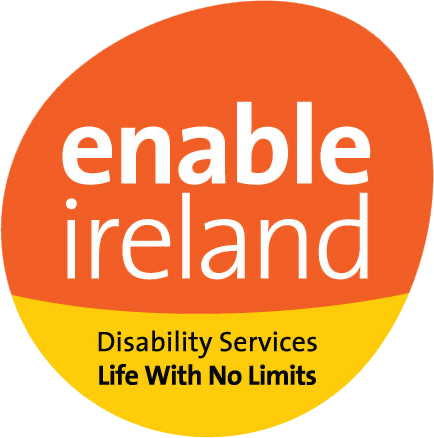Understanding Different Communication Styles
This page explains the different communication styles used by autistic and neurodivergent children and young people.
What is neurodiversity?
- Neurodiversity recognises that people experience and interact with the world around them in different ways; there is no one ‘right’ way of thinking, learning, and behaving.
- Everyone has a unique brain and different skills, needs and abilities.
- Differences are not viewed as deficits or failures.
Different types of language used in communication
We use the following types of language when communicating with each other.
- Receptive Language is the ability to understand words and language. It involves gaining information and meaning from routine, such as visual information within your environment, sounds and words, concepts such as size, shape, colours and time, grammar and written information.
- Expressive Language is our ability to communicate our thoughts and feelings through words, gestures, signs, and/or symbols. It can be as simple as pointing to a desired object or as complex as writing a book about an area of interest.
- Pragmatic Language is the use of appropriate communication in social situations (knowing what to say, how to say it, and when to say it).
Supporting expressive and receptive language in autistic children
- Approximately, 50% of autistic children may have difficulties with expressive and/or receptive language.
- Verbal processing times tend to be increased, even in those with a good understanding of language. [Verbal processing time is the time it takes to hear, understand, and respond to something].
- Often verbal language skills can mask difficulties with understanding and using non-verbal communication, for example in body language.
- There is a tendency for autistic children to take a literal understanding of language.
- Even those with fluent language may struggle to communicate verbally during times of stress/dysregulation. [Dysregulation means they have difficulty regulating their emotions in the situation and may not have an appropriate emotive response to the situation they are in].
- They may have difficulties understanding and responding to open-ended questions, which require more detail than a simple ‘yes’ or ‘no’ answer.
The ‘Double Empathy’ Problem
The theory of the double empathy problem suggests that when people with very different experiences of the world interact with one another, they will struggle to empathise with each other. In other words, they will struggle to understand and share the feelings of the other person. This is likely to be made worse through differences in language use and comprehension.
For example, non-autistic people may struggle to read the emotions of autistic people and as a result, form negative first impressions of autistic people.
According to the double empathy problem, empathy is a two-way process that depends a lot on our ways of doing things and our expectations from previous social experiences, which can be very different for autistic and non-autistic people.
These differences can lead to a breakdown in communication that can be distressing for both autistic and non-autistic people.
It might sometimes be difficult for non-autistic parents to understand what their autistic child is feeling, or autistic people might feel frustrated when they cannot effectively communicate their thoughts and feelings to others.
In this way, communication barriers between autistic and non-autistic people can make it more difficult for them to connect, share experiences, and empathise with one another.
In this scenario, the following might be the case:
The Autistic Person may:
- Struggle to communicate with neurotypical people.
- Socialise and interact well with autistic/neurodivergent people.
- Have difficulty “reading between the lines”.
- Have sensory processing differences.
- Feel socially isolated in neurotypical settings.
- Feel under pressure to "mask".
The Neurotypical Person may:
- Misinterpret autistic/neurodivergent communication styles.
- Have successful interactions with neurotypical people.
- Struggle to understand and recognise autism.
- Struggle to form positive first impressions with autistic people.
- Assume autistic people lack social skills.
- Benefit from a society that rewards neurotypical social skills.
Masking:
- This is when children put in effort into performing to appear “normal” (i.e. neurotypical).
- Pretending to be someone else/something you are not can take up a lot of emotional and physical energy.
- Some autistic children learn to mask without even realizing. They are noticed for autistic behaviours, such as stimming, talking about special interests, not making eye contact etc. So, then they naturally try to suppress them to stop the criticism/comments.
- The problem is that the longer the child masks their natural autistic self, the more stressful it becomes. It is one of the reasons why teachers may not notice any problems in school but when the child comes home it is too much on them and they end up mentally exhausted and overwhelmed, perhaps exploding with rage/tears or withdrawing.
- It is more likely to occur if they do not have a diagnosis, if they do not understand autism, or if they are not aware of their diagnosis as they do not understand why they may behave in a certain way or why they have needs different to their peers.
Autistic & Neurodivergent Communication Styles
Below are ways that autistic and neurodivergent people might communicate.
Echolalia
This is a common characteristic of autistic communication and of Gestalt language acquisition which is the learning of chunks of language rather than single words. It can be used with increasing flexibility. The use of stored phrases lowers the demands on their cognitive processing [how they process information in the situation] and leads to more efficiency in communicating.
Literal
Gestalt cognitive style leads to literal perception and processing of all details. It takes longer to work out the meaning of what was said or read. Ambiguous and vague messages are more likely to be misinterpreted or cause confusion or anxiety.
Open ended questions, such as, “how was your day” can be tricky for literal communicators. Try asking yes/no or “WH” questions (who, what, where, when or why) instead, for example, “where did you go?”
Proximity
Sensory processing differences changes the way autistic people move, use body posture or how close they like to be in an interaction with another.
They may need to lean in to process what the person is saying, lean in or on something to feel grounded or to seek distance during heightened anxiety.
Direct
Autistic people say what they mean. Efficiency in use of words reduces demands on executive functioning. [The phrase “executive function” refers to a set of skills. These skills underlie the capacity to plan ahead and meet goals, display self-control, follow multiple-step directions and stay focused despite distractions, among others.].
Trying to talk in “fluffy” language to avoid being misinterpreted as rude drains an autistic person’s physical energy and their cognitive capacity [this is the total amount of information the brain can retain at any particular moment]. Direct communicators are often mislabeled as rude or blunt instead of being straightforward.
Language Processing
Language processing and/or attention differences can lead to difficulties with finding words, with organization, and with sequencing events.
Verbal interactions may lead to being overwhelmed and difficulties for the person to express themselves fully using language.
Info dumping
This is an authentic autistic conversation style. The person verbally “downloads” in great detail about a topic.
This is a great way of building connections, making friends and sharing knowledge. This can also feel exhilarating and can serve as a form of self-regulation.
This style of communication can be mislabelled as interrupting, dominating, monologuing and showing a lack of reciprocity by those who only value neurotypical conversation.
Longer Conversational Turns
Autistic people converse best when their monotropic processing is engaged, establishing a flow in prolonged conversation. [Neurotypical people have polytropic brains and can focus on multiple things at a time, autistic/neurodivergent people often have monotropic brains so they have a tendency to focus their attention on a small number of interests at any time, tending to miss things outside of this attention tunnel].
Taking longer turns saves cognitive, physical, sensory and emotional labour during interactions.
Autistic people value worthwhile, personal, interesting, and emotive conversations as opposed to inconsequential small talk.
Eye contact
Eye contact can be anxiety-inducing and intense for an autistic person due to sensory processing differences and over activation in parts of the brain. This is not experienced by neurotypicals.
Reduced levels of eye contact are misunderstood as rudeness or lack of interest. Eye contact is easier when interacting with people where there is a sense of emotional safety.
Parallel Interaction Style
Autistic children’s play may involve lining, moving, and arranging toys with less back and forth interaction with those sharing the same space and/or materials.
Parallel play is an intimate way of connecting while doing something interesting and enjoyable. There may be more silence.
Older children and adults connect in parallel doing the same or different activities in the same space.
Understanding Autistic and Neurodivergent Communication
It’s not: rude, mean, blunt or angry.
It’s: straightforward, direct, factual and literal.
You may be misinterpreting an autistic person because of their communication style.
For more information:
- https://asiam.ie/
- Learning About Neurodiversity at School (LEANS) | Salvesen Mindroom Research Centre (ed.ac.uk)
- https://embrace-autism.com/autism-and-camouflaging/
- https://reframingautism.org.au/
- https://www.facebook.com/p/NeuroWild-100087870753308/
- A NeuroInclusive Story from NeuroClastic - My brain is autistic



